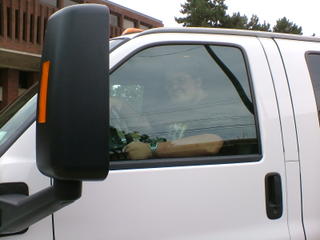The Book's For Sale!
It's official - I've sent in the copy, photos and captions to the publisher, and Rapid Transit Series Buses: General Motors and Beyond is on its way to print!
I've still yet to see the test print which, according to plan, should arrive in the next few weeks. Once that's okayed, it's off to public printing! I'm currently hearing timeframes between January and March of 2008.
That said, the book's showing up on Amazon - and they're currently accepting pre-orders. I'm not trying to be glib, but I think there's some neat historical content within the publication. I'm not calling it perfect, but if you're a fan of transit, bus or GM history, you may really enjoy this publication.
Click here for the RTS book!
I'd also be appreciative in those willing to convince their local booksellers into stocking the book, too. If you're interested, pass on ISBN number 978-1583882092. I'd be willing to autograph copies lying on bookshelves, too. I'd be willing to speak with any stockists and answer any questions, provided they contact me at:
RTSHistory (at) gmail.com
(remove the spaces and replace the (at) with @)
Thanks for all the support and interest!
-Evan
I've still yet to see the test print which, according to plan, should arrive in the next few weeks. Once that's okayed, it's off to public printing! I'm currently hearing timeframes between January and March of 2008.
That said, the book's showing up on Amazon - and they're currently accepting pre-orders. I'm not trying to be glib, but I think there's some neat historical content within the publication. I'm not calling it perfect, but if you're a fan of transit, bus or GM history, you may really enjoy this publication.
Click here for the RTS book!
I'd also be appreciative in those willing to convince their local booksellers into stocking the book, too. If you're interested, pass on ISBN number 978-1583882092. I'd be willing to autograph copies lying on bookshelves, too. I'd be willing to speak with any stockists and answer any questions, provided they contact me at:
RTSHistory (at) gmail.com
(remove the spaces and replace the (at) with @)
Thanks for all the support and interest!
-Evan






 In the meantime, we sit and wait to see what happens. If nothing else, maybe we'll see revisions to the Giga (other than this horrid rhinoplasty) that brings it in line with the rest of Isuzu's COEs.
In the meantime, we sit and wait to see what happens. If nothing else, maybe we'll see revisions to the Giga (other than this horrid rhinoplasty) that brings it in line with the rest of Isuzu's COEs.